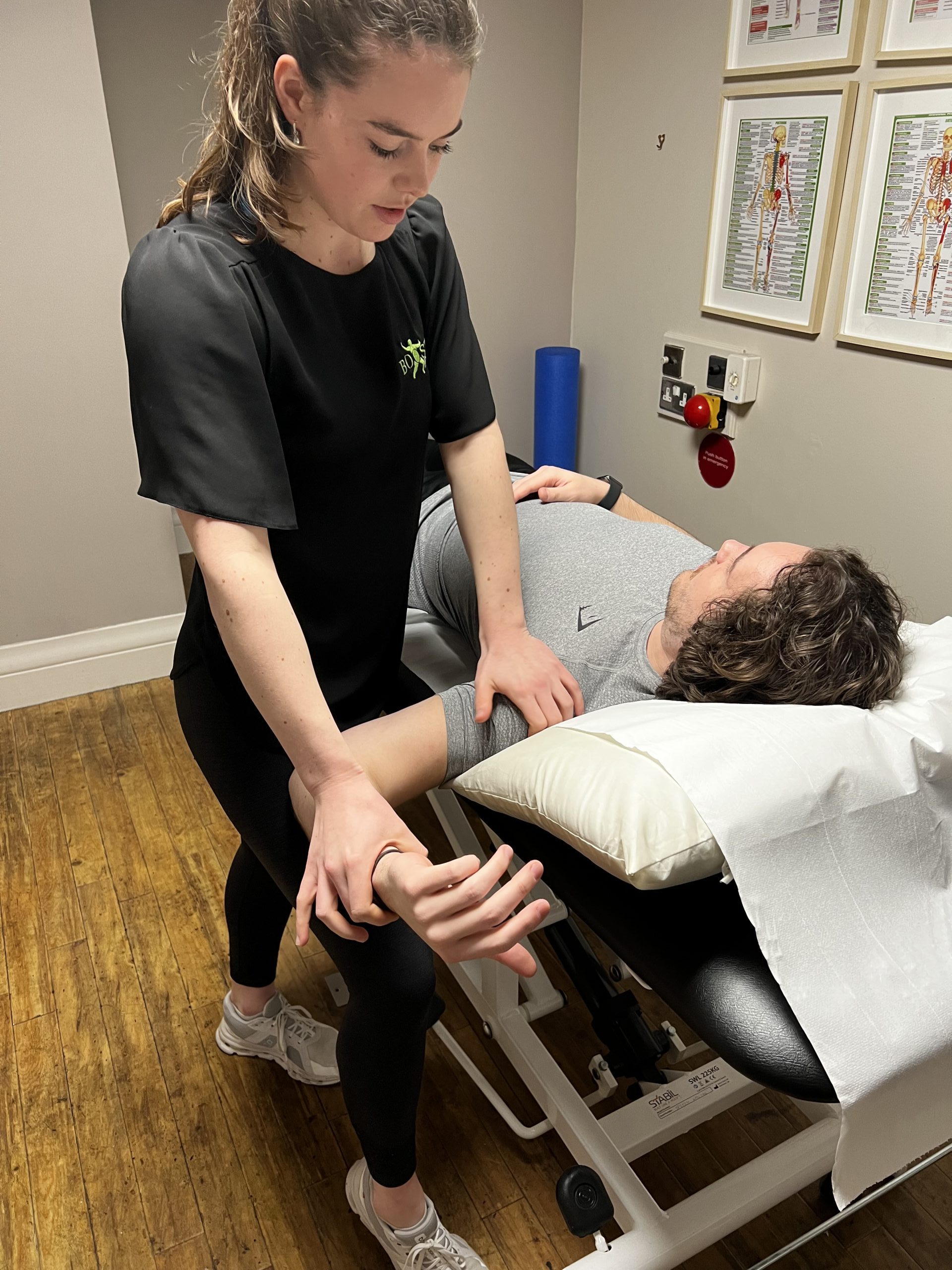Stiff shoulders are common, particularly trying to reach up high, or reaching behind your back. Katy has created 2 videos demonstrating stretches for stiff shoulders.

6 common reasons for stiff shoulders
- Frozen Shoulder (Adhesive Capsulitis): This condition causes the shoulder joint to become stiff and painful, with a gradual loss of motion. It often occurs after injury or prolonged immobility.
- Rotator Cuff Injury: Tears or inflammation in the rotator cuff muscles can limit shoulder movement, leading to stiffness, pain, and weakness.
- Arthritis: Osteoarthritis or rheumatoid arthritis in the shoulder joint can cause stiffness due to the wearing down of cartilage or inflammation of the joint lining.
- Poor Posture: Hunching over or slouching for extended periods can lead to muscle imbalances and tension around the shoulder, causing stiffness.
- Muscle Strain: Overuse, heavy lifting, or sudden awkward movements can strain the shoulder muscles, leading to pain and stiffness, particularly in the upper back and shoulder area.
- Calcific Tendinitis: Calcium deposits build up in the tendons of your shoulder, particularly the rotator cuff tendons. This can cause EXTREME pain and stiffness in the shoulder.
Each of these causes may have different treatment approaches, ranging from hands on physio treatments including myofascial release, joint mobilisations, PNF stretches and exercises.
Katy demonstrates a stretch to improve reaching behind the back.
In Katy’s second video she demonstrates the “SLEEPER STRETCH”
We love using a variety of techniques to help our patients with stiff shoulders. Here are common treatment techniques we use:
1. Joint Mobilization
This manual therapy technique involves the physiotherapist using their hands to apply controlled pressure and movements to the shoulder joint. The goal is to increase the joint’s mobility by gently moving it through various ranges of motion, loosening tight structures around the joint.
2. Soft Tissue Myofascial Release
We use specific techniques to relieve tension in the muscles surrounding the shoulder, such as the rotator cuff muscles, deltoids, and trapezius. We release myofascial trigger points that can limit movement of the shoulder.
3. Stretching Exercises
Physiotherapists guide patients through targeted stretching exercises to improve flexibility and gradually increase the range of motion.
4. Strengthening Exercises
Strengthening the muscles around the shoulder, especially the rotator cuff and scapular muscles, helps stabilize the joint and improves overall shoulder function. Common exercises include:
- Resistance band exercises to strengthen the rotator cuff.
- Isometric shoulder exercises to build strength without overstretching the joint.
5. Acupuncture and Dry Needling
We use needling to release areas of tension and restriction to improve mobility in the shoulder and to reduce pain in the area that may be limiting mobility.